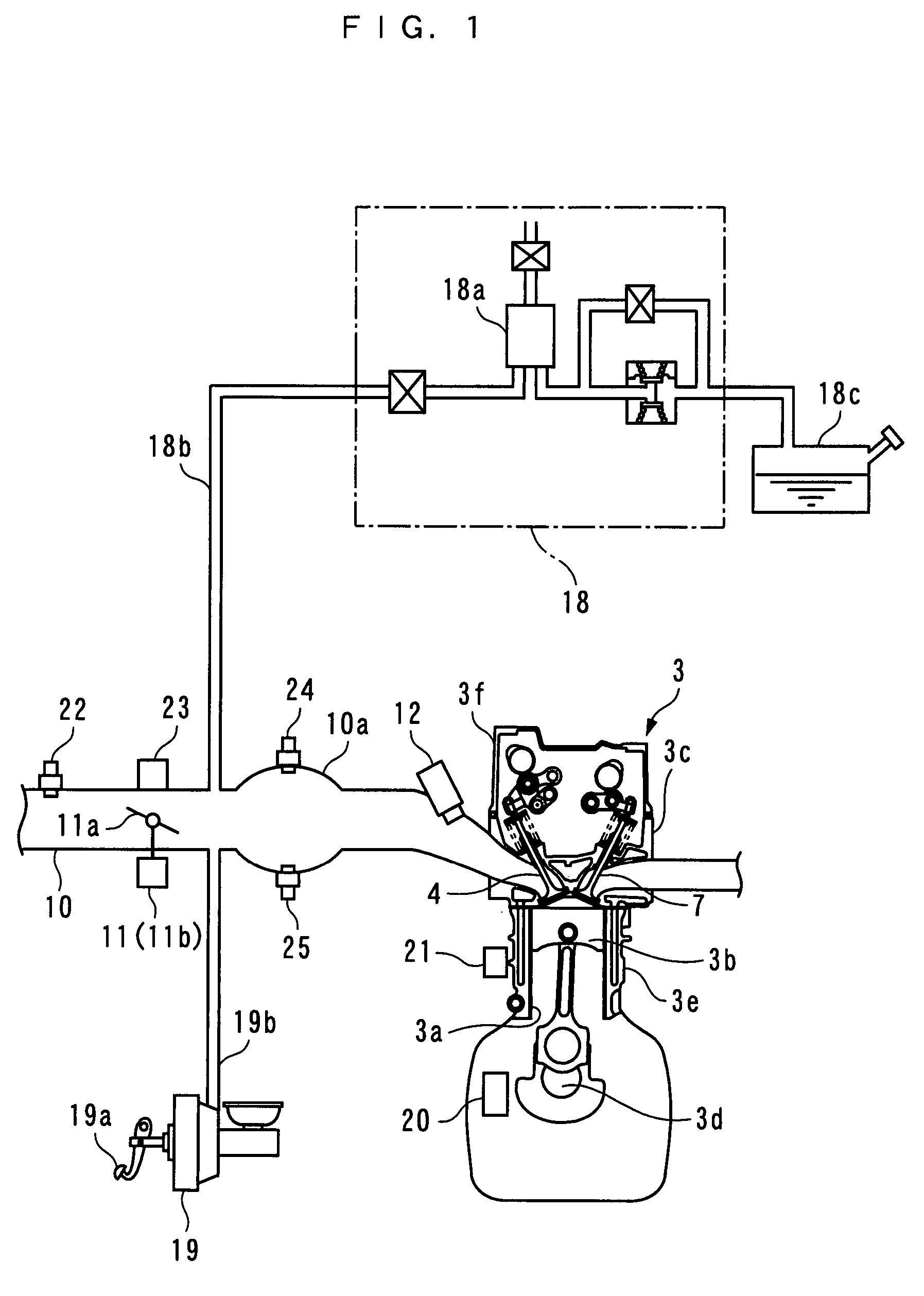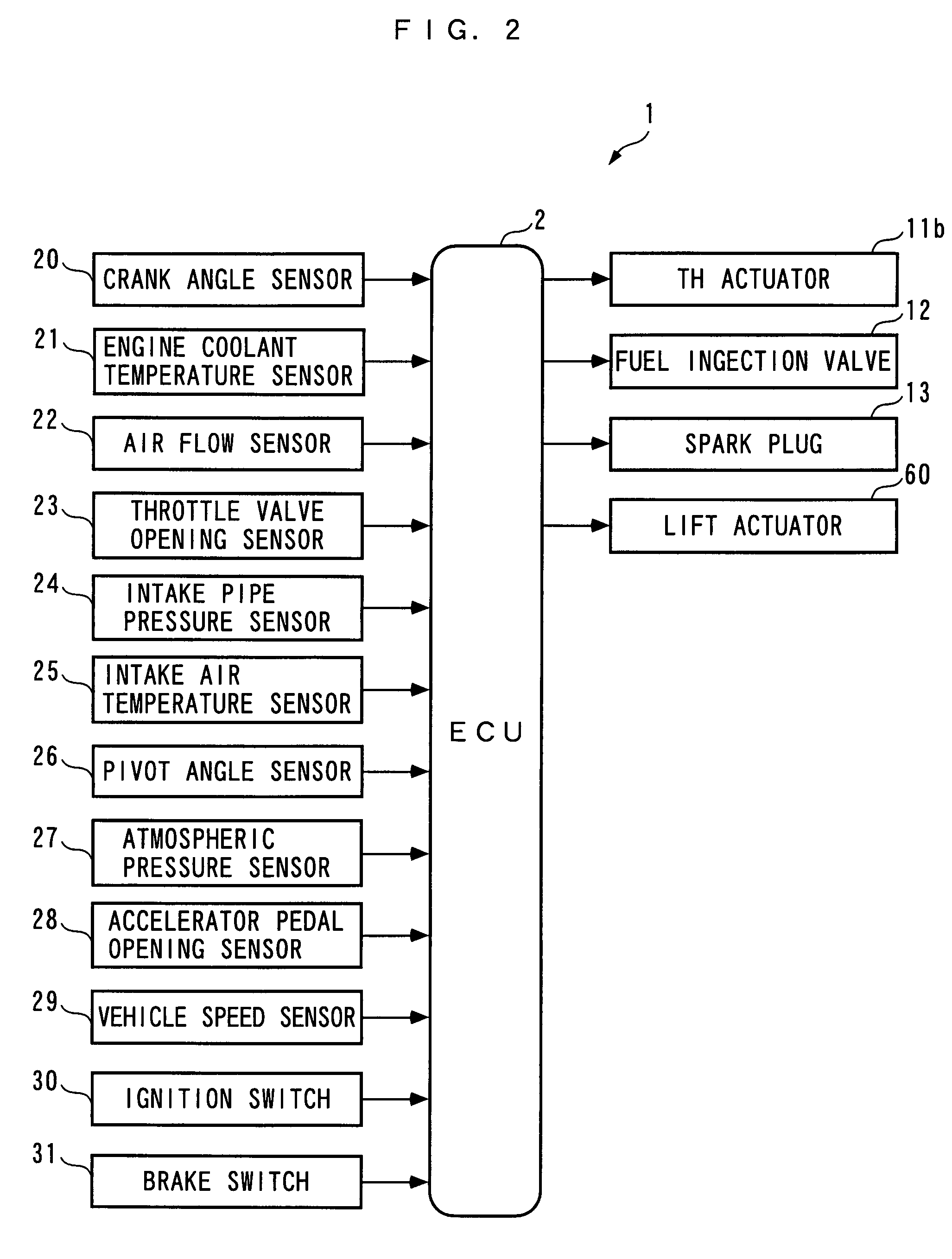Control system for plant and internal combustion engine
a control system and plant technology, applied in electrical control, program control, instruments, etc., can solve the problems of reducing the accuracy of identification of model parameters, increasing the modeling errors of plant models, and unable to directly identify the model parameters of plant models directly from experimental data of the plant, so as to improve the accuracy and the response of control
- Summary
- Abstract
- Description
- Claims
- Application Information
AI Technical Summary
Benefits of technology
Problems solved by technology
Method used
Image
Examples
first embodiment
[0101]Hereafter, a control system according to the present invention will be described with reference to drawings. The control system 1 includes an ECU 2, as shown in FIG. 2. As described hereinafter, the ECU 2 carries out control processes, such as a variable mechanism control process, depending on operating conditions of an internal combustion engine (hereinafter simply referred to as “the engine”) 3.
[0102]Referring to FIGS. 1 and 3, the engine 3 is an in-line four-cylinder gasoline engine having four pairs of cylinders 3a and pistons 3b (only one pair of which is shown), and installed on a vehicle, not shown. The engine 3 includes an intake valve 4 and an exhaust valve 7 provided for each cylinder 3a, for opening and closing an intake port and an exhaust port thereof, respectively, an intake camshaft 5 and intake cams 6 that actuate the intake valves 4, a variable intake valve-actuating mechanism 40 that actuates the intake valves 4 to open and close the same, an exhaust camshaft...
second embodiment
[0267]Next, a description will be given of the results of simulations of variable mechanism control (hereinafter referred to as “the results of the control”) performed by the control system 1A according to the FIG. 26 shows the results of the control, obtained when there are modeling errors, i.e. when calculation errors occur in the calculation of the non-interacting parameters Fth and Flf.
[0268]As is clear from FIG. 26, according to the results of the control, when the target intake air amount Gcyl_cmd is changed stepwise to a larger value in the state of the target intake pipe pressure PB_cmd being held constant (time t31), the degree of difference generated between the intake pipe pressure PB and the target intake pipe pressure PB_cmd is smaller than in the FIG. 23 results of the control by the first embodiment, obtained when there are modeling errors, and the intake air amount Gcyl is not overshot with respect to the target intake air amount Gcyl_cmd, so that the control accura...
third embodiment
[0303]Next, a description will be given of the results of simulations of variable mechanism control (hereinafter referred to as “the results of the control”) performed by the control system 1B according to the FIG. 31 shows the results of the control, obtained when there are modeling errors, i.e. when the identified values Fth_hat and Flf_hat of the non-interacting parameters have deviated from actual values of the non-interacting parameters Fth and Flf at the start of the control.
[0304]As is apparent from FIG. 31, according to the results of the control, although the identified values Fth_hat and Flf_hat of the non-interacting parameters are calculated by the onboard identifier 303 as respective values very close to the actual values of the non-interacting parameters Fth and Flf, the identified values Fth_hat and Flf_hat do not converge to the actual values of the non-interacting parameters Fth and Flf, and slight errors occur. The errors occur because the changing behaviors of th...
PUM
 Login to View More
Login to View More Abstract
Description
Claims
Application Information
 Login to View More
Login to View More - R&D
- Intellectual Property
- Life Sciences
- Materials
- Tech Scout
- Unparalleled Data Quality
- Higher Quality Content
- 60% Fewer Hallucinations
Browse by: Latest US Patents, China's latest patents, Technical Efficacy Thesaurus, Application Domain, Technology Topic, Popular Technical Reports.
© 2025 PatSnap. All rights reserved.Legal|Privacy policy|Modern Slavery Act Transparency Statement|Sitemap|About US| Contact US: help@patsnap.com



